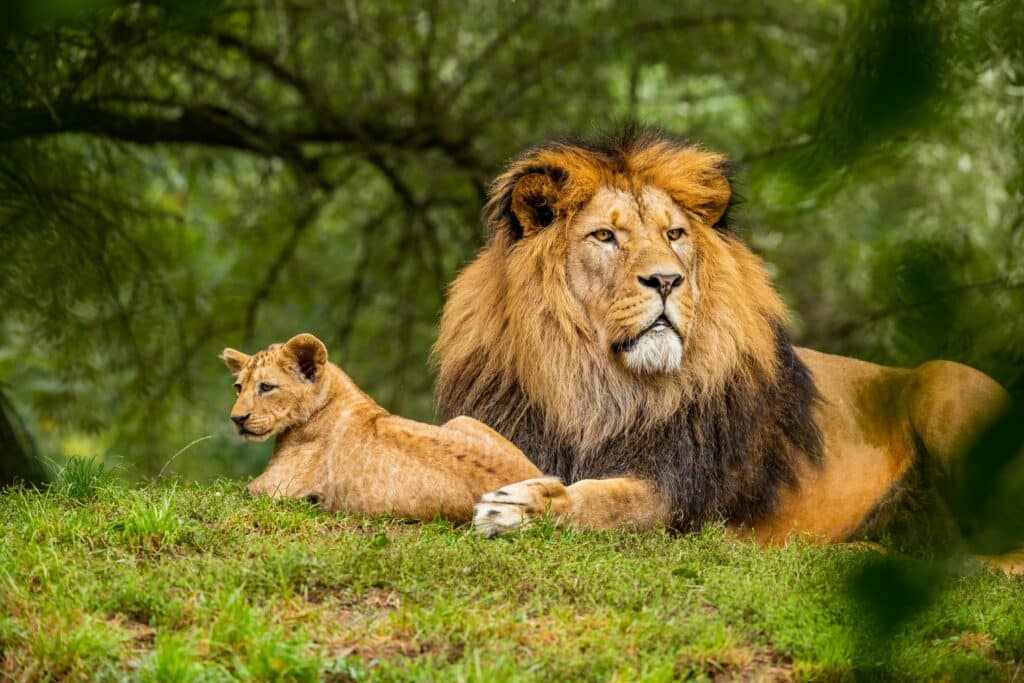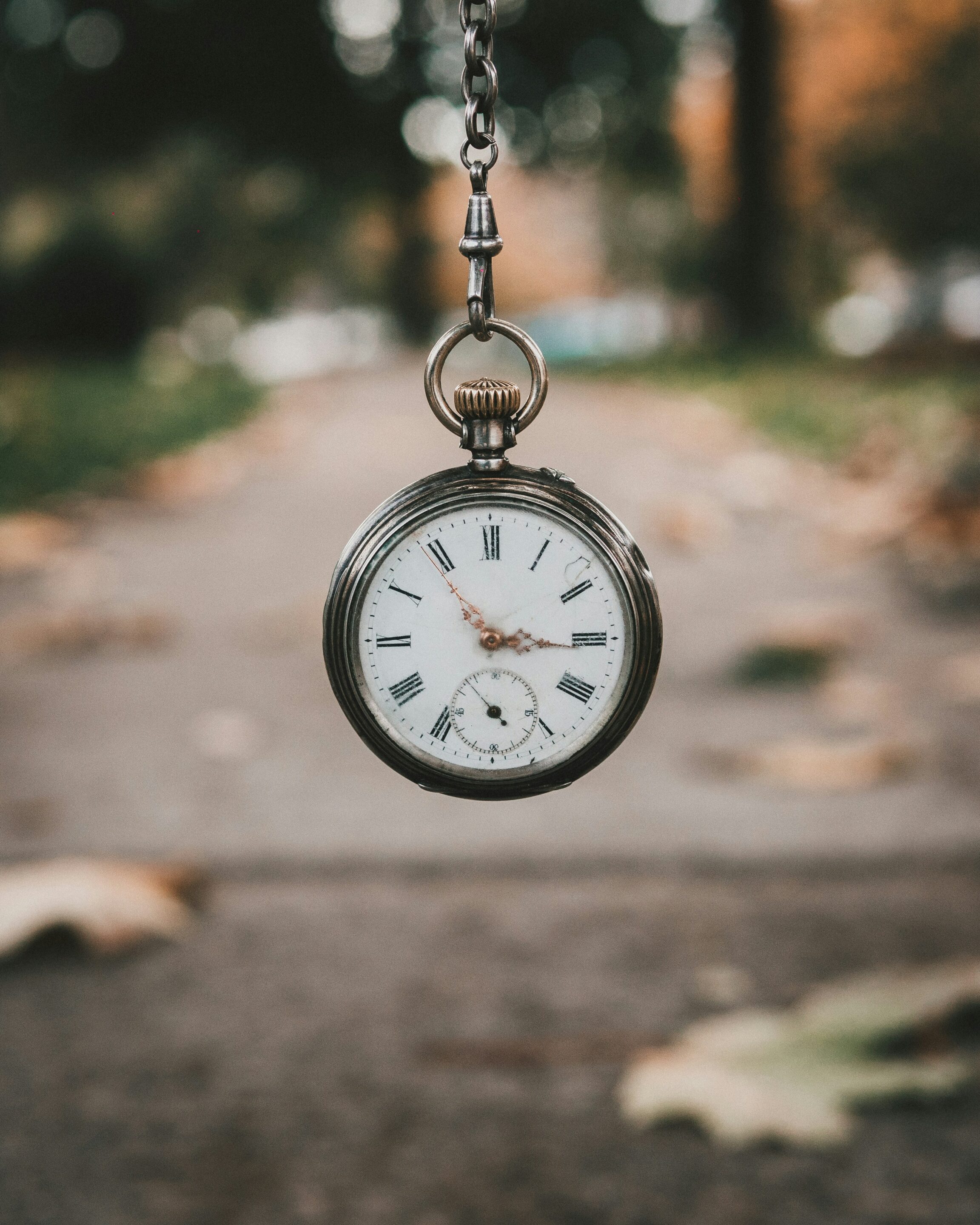Imagine immersing yourself in the breathtaking beauty of Guanacaste, a region teeming with diversity and rich wildlife. In this article, we will take you on a journey through the best wildlife day trip spots in Guanacaste for photography enthusiasts. From stunning national parks to remote beaches, discover the hidden treasures that await you, and capture mesmerizing moments with your camera lens. Get ready to be amazed by the vibrant array of creatures that call this enchanting region their home, while experiencing the thrill of capturing wildlife photography at its finest.

Santa Rosa National Park
Overview of the National Park
Santa Rosa National Park is a stunning wildlife sanctuary located in Guanacaste, Costa Rica. Spanning over 38,000 acres, this park offers a diverse range of habitats, including dry forests, wetlands, and beautiful beaches. Its unique combination of ecosystems makes it a prime location for wildlife photography.
Notable wildlife to capture
Santa Rosa National Park is home to a myriad of fascinating wildlife species that are waiting to be captured through your lens. Keep your eyes peeled for the majestic jaguars, resplendent quetzals, colorful toucans, playful howler monkeys, and graceful sea turtles. These animals, along with numerous other bird species and mammals, make Santa Rosa a true wildlife enthusiast’s paradise.
Tips for Wildlife Photography in Santa Rosa
When photographing wildlife in Santa Rosa National Park, it is essential to be patient and observant. The park’s animals are often spotted early in the morning or late in the afternoon. Utilize natural lighting to enhance the beauty of your subjects and focus on capturing their unique behaviors and natural habitats. It’s crucial to respect the animals’ space and keep a safe distance to avoid disturbing them. Additionally, using a telephoto lens can help you get closer shots without causing any disturbance.
Best time of the year for photography
The best time to visit Santa Rosa National Park for wildlife photography is during the dry season, which typically lasts from December to April. During this period, the foliage is relatively sparse, making it easier to spot and photograph animals. The weather is also more predictable, with fewer chances of rain, offering photographers the opportunity to capture stunning shots in optimal lighting conditions. However, it is important to note that wildlife photography can be rewarding at any time of the year, as each season brings its own unique opportunities and surprises.
Palo Verde National Park
General information about Palo Verde
Palo Verde National Park is a must-visit destination for wildlife photographers in Guanacaste. Situated along the banks of the Tempisque River, this park boasts a diverse range of ecosystems, including tropical dry forests, wetlands, and mangrove swamps. With over 15,000 hectares of protected land, Palo Verde provides a haven for countless species of flora and fauna.
Types of Wildlife to Expect
Palo Verde National Park is teeming with an incredible array of wildlife. Keep your camera ready to capture iconic Costa Rican animals such as crocodiles, iguanas, monkeys, and a variety of colorful bird species, including herons, egrets, and roseate spoonbills. The park is particularly famous for its abundant birdlife, making it a paradise for bird-watching enthusiasts and wildlife photographers alike.
Photography tips for Palo Verde
When photographing wildlife in Palo Verde National Park, it is advisable to use a combination of wide-angle and telephoto lenses. The wide-angle lens can capture the diverse landscapes and intricate details of the park, while the telephoto lens allows you to zoom in on wildlife from a safe distance. It is important to respect the animals’ natural behavior and avoid any actions that could disturb them. Patience is key, as wildlife can be unpredictable, but capturing that perfect moment is worth the wait.
Ideal seasons for photography
Palo Verde National Park is a year-round destination for wildlife photography. However, the best time to visit for optimal photography opportunities is during the dry season, which typically extends from December to April. During this period, the water levels in the wetlands recede, concentrating the animals around the remaining water sources. The dry season also offers clear skies and better lighting conditions for capturing stunning images of the park’s wildlife.

Rincon de la Vieja National Park
Introduction to Rincon de la Vieja
Situated in the northwestern region of Costa Rica, Rincon de la Vieja National Park is a captivating destination for nature lovers and wildlife photographers alike. This diverse park encompasses over 34,000 acres and is named after the iconic Rincon de la Vieja volcano, which dominates the landscape with its majestic presence. The park’s unique combination of volcanic activity, lush forests, and abundant wildlife makes it an exceptional location for capturing the beauty of Costa Rica’s natural wonders.
Flora and Fauna of interest
Rincon de la Vieja National Park is home to a remarkable array of flora and fauna. As you explore the park’s various ecosystems, keep an eye out for vibrant orchids, towering palms, and exotic bromeliads. Wildlife enthusiasts will be delighted to encounter species such as coatis, peccaries, capuchin monkeys, and a variety of snakes and lizards. The park is also known for its population of scarlet macaws, which provide a striking splash of color against the lush green backdrop.
Photography strategies for Rincon de la Vieja
When photographing Rincon de la Vieja National Park, it is essential to prioritize the preservation of the environment and wildlife. It is recommended to use a telephoto lens to capture the park’s diverse wildlife from a distance, without causing any disturbance. Additionally, experiment with incorporating the unique volcanic features into your compositions to create captivating images that reflect the natural beauty of the park. Take advantage of the soft, diffused lighting that filters through the forest canopy to enhance the overall mood of your photographs.
Recommended period for visit
The best time to visit Rincon de la Vieja National Park for wildlife photography is during the dry season, which typically extends from December to April. During this period, the trails are more accessible, and the chances of encountering wildlife are higher. Additionally, the drier conditions make it easier to navigate through the park and capture stunning photographs. However, it is important to note that the park’s beauty can be enjoyed year-round, and each season offers its own distinct charm and photographic opportunities.
Barra Honda National Park
About Barra Honda National Park
Barra Honda National Park, located in northwestern Costa Rica, is a hidden gem for wildlife photographers seeking to capture the beauty of Guanacaste’s natural wonders. This unique park is renowned for its intricate cave systems, formed by millions of years of water erosion. The park’s primary purpose is to protect these limestone caves, making it an exceptional destination for adventurers and photographers alike.
Wildlife highlights in Barra Honda
While Barra Honda National Park is predominantly known for its caves, it also offers fantastic opportunities to capture some of Costa Rica’s stunning wildlife. Keep an eye out for white-faced capuchin monkeys, armadillos, bats, and a variety of bird species. The park’s lush forests provide a picturesque backdrop for wildlife photography, with ample opportunities to capture the animals in their natural habitats.
Photography guide for Barra Honda
When photographing in Barra Honda National Park, it is essential to respect the fragility of the cave systems and wildlife habitats. As flash photography and excessive lighting can cause harm to the delicate ecosystems, it is best to rely on natural lighting and long exposure techniques to capture the park’s beauty. Utilizing a macro lens can also help capture the intricate details of the cave formations and smaller wildlife species. Exercise caution when hiking through the park and be prepared for changing lighting conditions within the caves.
Suggested time for visit
Barra Honda National Park can be visited throughout the year, but the dry season (December to April) offers better hiking and photography conditions. During this time, the trails are less muddy, allowing for easier exploration of the park’s diverse landscapes. However, photography opportunities can still be outstanding during the wet season, as the rain adds a unique atmosphere to the park’s caves and surrounding vegetation. Regardless of the season, Barra Honda National Park promises an unforgettable wildlife photography experience.

Curu Wildlife Refuge
Insight into Curu Wildlife Refuge
Curu Wildlife Refuge, located on the Nicoya Peninsula, is a hidden gem for wildlife photography enthusiasts. This diverse refuge encompasses a variety of ecosystems, including mangroves, dry forests, and pristine beaches. With its focus on conservation and sustainable practices, Curu Wildlife Refuge provides an excellent opportunity to capture the beauty of Costa Rica’s wildlife in a natural and unspoiled setting.
Wildlife species noteworthy for Photography
Curu Wildlife Refuge is brimming with an incredible diversity of flora and fauna. Keep your camera ready to capture pictures of white-faced capuchin monkeys, coatis, anteaters, and agoutis as they roam freely through their natural habitats. The park is also home to an array of bird species, including toucans, kingfishers, and scarlet macaws, offering ample photo opportunities for bird enthusiasts.
Photography counsel for Curu Wildlife Refuge
When photographing in Curu Wildlife Refuge, it is important to respect the park’s regulations and guidelines for wildlife interaction. Maintain a safe distance from the animals and avoid any actions that could cause harm or disturbance. Utilize a telephoto lens to capture detailed and intimate shots of the wildlife without encroaching on their personal space. Additionally, experiment with different angles and compositions to showcase the park’s diverse landscapes, from dense mangroves to picturesque beaches.
Optimal seasons for photoshoots
Curu Wildlife Refuge can be visited year-round, but the dry season (December to April) offers photographers optimal conditions for wildlife photography. During this period, the forest vegetation is less dense, making it easier to spot and photograph animals. The dry season also provides more predictable weather, with sunny days and clear skies, allowing for vibrant and well-lit photographs. However, even during the rainy season, Curu Wildlife Refuge remains a haven for wildlife and offers unique opportunities for capturing the beauty of this ecological treasure.
Monteverde Cloud Forest Reserve
Exploring Monteverde Cloud Forest Reserve
Nestled in the misty mountains of Costa Rica, the Monteverde Cloud Forest Reserve is a dream destination for wildlife photographers. This enchanting reserve covers over 26,000 acres of dense cloud forests, making it home to an incredible array of flora and fauna. With its ethereal atmosphere and abundant biodiversity, Monteverde Cloud Forest Reserve offers a truly magical experience for photographers.
Unique wildlife in Monteverde Cloud Forest
The Monteverde Cloud Forest Reserve is famous for its unique and elusive wildlife species. In this misty paradise, you may encounter the resplendent quetzal, a rare and striking bird known for its vibrant plumage. Other notable species include the three-wattled bellbird, spider monkeys, and the colorful golden toad. The reserve’s dense vegetation provides excellent camouflage for these fascinating creatures, making every sighting an extraordinary opportunity for wildlife photography.
Photography techniques for the Cloud Forest
When photographing in the Monteverde Cloud Forest Reserve, it is essential to utilize the right techniques to capture the essence of this ethereal environment. The ever-changing lighting conditions can be challenging, but they also provide opportunities to create unique and atmospheric images. Experiment with different exposures to capture the misty ambiance and play with depth of field to highlight the minute details of wildlife and plants. A telephoto lens can help you capture close-up shots of elusive birds and animals without disturbing their natural behavior.
Favorable time for photography visits
The Monteverde Cloud Forest Reserve can be visited throughout the year, but the dry season (December to April) offers the best clarity and visibility for photography. During this period, the mist is less dense, allowing for better lighting conditions and more vibrant photographs. However, even during the rainy season, the reserve’s mystical atmosphere is captivating, and the unique wildlife of Monteverde can still be witnessed and photographed. Each season offers its own charm, so plan your visit based on the specific experiences and photographic opportunities you desire.
Marino Ballena National Park
Introducing Marino Ballena National Park
Marino Ballena National Park, located in the province of Puntarenas, is a hidden gem along Costa Rica’s South Pacific coast. This marine park spans over 13,000 acres and is named after the humpback whales that migrate to its waters each year. With its pristine beaches, vibrant coral reefs, and diverse marine life, Marino Ballena National Park offers a wealth of opportunities for underwater and coastal wildlife photography.
Banner species for wildlife photography
Marino Ballena National Park is renowned for its incredible marine biodiversity, making it a paradise for underwater and coastal wildlife photographers. The park’s most celebrated species is the humpback whale, which can be seen breaching and playing in the park’s waters during the migration season. Other noteworthy species include dolphins, sea turtles, manta rays, and a multitude of colorful fish and coral species.
Photography advice for Marino Ballena National park
When photographing in Marino Ballena National Park, it is crucial to respect the marine ecosystem and adhere to responsible photography practices. Avoid touching or disturbing marine life and coral reefs to ensure their protection and preservation. Underwater photography requires specialized equipment, such as underwater housings and strobes. It is recommended to invest in these tools to capture the vibrant colors and intricate details of the park’s underwater world. For coastal wildlife photography, a telephoto lens can help you capture close-up shots of wildlife without disturbing their natural behavior.
Prime periods for photography trips
The best time to visit Marino Ballena National Park for wildlife photography largely depends on the species you wish to capture. The humpback whale migration occurs from December to April and from July to October, offering fantastic opportunities for capturing these magnificent creatures breaching and playing in the park’s waters. However, the park’s coastal and underwater ecosystems can be explored year-round, with each season offering its own unique wildlife encounters. Research the specific wildlife species you are interested in photographing to determine the ideal time for your visit.
Tortuguero National Park
Details about Tortuguero National Park
Tortuguero National Park, located on Costa Rica’s northeastern coast, is a true paradise for nature lovers and wildlife photographers. Spanning over 77,000 acres, this park is best known for its significant nesting sites for endangered sea turtles. With its extensive network of canals, lush rainforests, and diverse wildlife, Tortuguero offers ample opportunities for capturing the beauty of Costa Rica’s natural wonders.
Species of wildlife to snap in Tortuguero
Tortuguero National Park is home to a fascinating array of wildlife species that are waiting to be captured through your lens. The park’s most renowned inhabitants are the sea turtles, including the green turtle, leatherback turtle, and hawksbill turtle, which nest on the park’s beaches. Additionally, keep an eye out for howler monkeys, sloths, iguanas, and an astonishing variety of bird species, including toucans and herons.
Photography know-how for Tortuguero
When photographing wildlife in Tortuguero National Park, it is important to be patient and respectful of the animals’ natural habitats. The park’s winding canals and dense rainforests provide great opportunities for capturing the animals in their natural environments. Utilize a telephoto lens to zoom in on wildlife from a distance without causing any disturbance. When photographing sea turtles, always follow the guidelines provided by the park rangers to ensure their protection and minimize human impact.
Suitable times for photography tours
The best time to visit Tortuguero National Park for wildlife photography largely depends on the specific species you want to capture. The nesting season for sea turtles occurs from July to October, offering photographers the opportunity to witness this incredible natural phenomenon. However, the park’s rich biodiversity can be enjoyed year-round. The dry season (December to April) offers better visibility and accessibility, making it easier to explore the park and capture stunning photographs. Be sure to check the weather conditions and nesting season schedules before planning your photography expedition.
Manuel Antonio National Park
Understanding Manuel Antonio National Park
Manuel Antonio National Park, located on Costa Rica’s central Pacific coast, is a renowned wildlife hotspot and a fantastic destination for nature and photography enthusiasts. Spanning over 1,700 acres, this small but biodiverse park offers a unique fusion of lush rainforest, pristine beaches, and abundant wildlife. With its stunning landscapes and marvelous wildlife, Manuel Antonio National Park is a must-visit for photographers.
Wildlife photography opportunities in Manuel Antonio
Manuel Antonio National Park is home to an impressive array of wildlife, making it an ideal destination for capturing some of Costa Rica’s most iconic species. Keep your camera ready to photograph playful white-faced capuchin monkeys, three-toed sloths lazily hanging from branches, vibrant tropical birds, and curious raccoons. The park’s incredible biodiversity, combined with breathtaking coastal vistas, offers endless opportunities for photographers to capture stunning images.
Photography principles for Manuel Antonio
When photographing wildlife in Manuel Antonio National Park, it is important to respect the animals’ space and natural behavior. The park is relatively small, so it is common to encounter wildlife along the trails. Utilize a telephoto lens to capture close-up shots without disturbing the animals. Experiment with different angles and compositions to highlight the park’s diverse landscapes, from dense rainforests to idyllic beaches. Additionally, take advantage of the soft, diffused lighting during the early morning and late afternoon to create atmospheric and captivating photographs.
Best season to plan your photography expedition
The best time to visit Manuel Antonio National Park for wildlife photography is during the dry season, which typically spans from December to April. During this period, the weather is generally more predictable, with sunny days and clear skies, providing optimal lighting conditions for photography. The dry season also offers easier trail navigation and increased chances of wildlife sightings. However, even during the rainy season, Manuel Antonio National Park remains a captivating destination for nature and photography enthusiasts. The lush greenery and occasional rain showers add a unique touch to the park’s landscapes and provide opportunities for creating moody and atmospheric photographs.
Arenal Volcano National Park
A peek into Arenal Volcano National Park
Arenal Volcano National Park is a captivating destination for wildlife photographers, offering a unique combination of volcanic landscapes and diverse ecosystems. Located in northern Costa Rica, this park is dominated by the majestic Arenal Volcano, which towers over the surrounding rainforests and serves as a dramatic backdrop for capturing stunning photographs.
Key wildlife for photographers
Arenal Volcano National Park offers a fantastic opportunity to capture the beauty of Costa Rica’s wildlife against the backdrop of a volcanic landscape. Keep an eye out for howler monkeys, sloths, toucans, and a variety of colorful bird species as you explore the park’s trails. The park is also home to numerous reptiles and amphibians, including snakes and frogs, which provide unique photographic subjects.
Insightful photography guidelines for Arenal
When photographing in Arenal Volcano National Park, it is important to consider the park’s ever-changing weather conditions. The volcano’s peak is often shrouded in mist, giving a mystical quality to your photographs. Experiment with capturing the play of light and shadow as it filters through the rainforest canopy. Utilizing a wide-angle lens can help you capture the grandeur of the volcano and the surrounding landscapes. A telephoto lens may also come in handy for capturing detailed shots of wildlife from a safe distance.
Optimum times of the year for photography
The dry season, from December to April, is the best time to visit Arenal Volcano National Park for wildlife photography. During this period, the weather is generally clearer, offering better visibility of the volcano and surrounding landscapes. Additionally, the dry season ensures easier trail navigation and increases the chances of wildlife sightings. However, Costa Rica’s charm lies in its incredible biodiversity and evergreen rainforests, so visiting during the wet season (May to November) can provide unique photographic opportunities. The rain adds a magical touch to the landscapes, and the vibrant foliage creates a lush backdrop for wildlife photography.







0 Comments